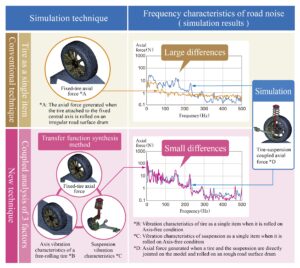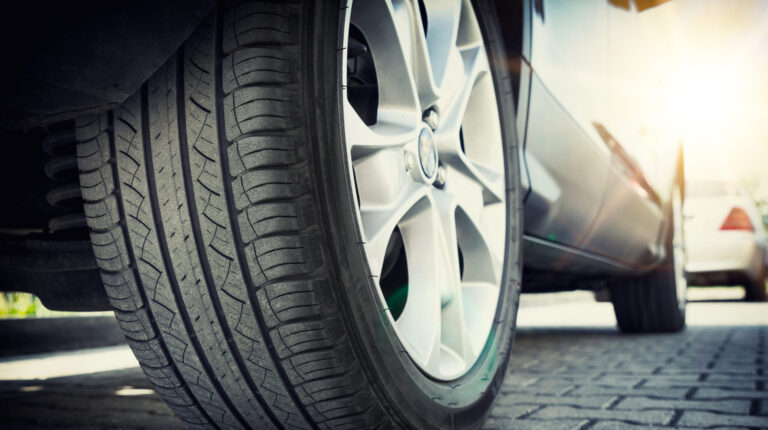Sumitomo Rubber Industries has developed a new technique to predict noise generated by the combined vibration of tires and vehicles.
This method uses a tire rolling motion simulation and aims to assist both tire and vehicle manufacturers in reducing the noise produced by their products, to improve passenger comfort and simplify development processes by reducing the need for physical prototypes.
The new method simplifies the prediction of road noise performance by coupling the vibration characteristics of the tire and vehicle using the transfer function synthesis method, which is more accessible than sensitive vehicle information. It should also reduce the need for tests with actual vehicles and prototype tires.
Road noise, which occurs when the road surface transmits vibrations through the tires to the vehicle, is an important factor for passenger comfort. With electric vehicles (EVs), the absence of engine noise makes road noise more noticeable, highlighting the importance of reducing it.
Sumitomo Rubber says that standalone tire simulation techniques have traditionally been employed to reduce road noise, but predicting the performance of the combined tire and vehicle system has been challenging.

The company’s new technique aims to address this by using a transfer function synthesis method to combine the performance of the tire and the vehicle. This method should enable the simulation of axis vibration characteristics of a free-rolling tire, which are difficult to assess experimentally.
The technique was validated by comparing the axis vibration characteristics of stationary and rolling tires, confirming differences due to factors such as the gyro effect. The findings were presented at the 2023 Society of Automotive Engineers of Japan (JSAE) Annual Congress and a patent for the simulation is pending (Kokai No. 2022-37666).
Sumitomo Rubber says it plans to use both this noise simulation technique and the existing ‘Tire Aerodynamic Simulation’, which is designed to helps reduce electricity consumption in EVs. This combined approach aims to support the development of EV tires, advanced tires and model-based development, the company says.



